Navigation article:
The earth’s leading museum of art and style
Open daily from 10:00 to 17:45
Open Friday from 10:00 to 22:00
Calligraphy in Islamic art
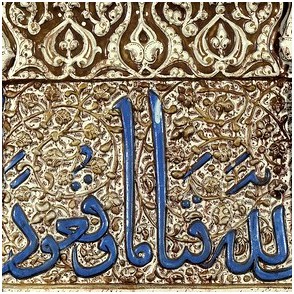
Tile with Arabic inscription, Iran, about 1215. Museum no. 1481-1876
The introduction of sophisticated calligraphy being an talent isn’t unique to Islamic culture. Other these include Chinese and Japanese calligraphy and illuminated bibles from north-west Europe such as the famous Book of Kells. Within the Islamic world, however, calligraphy has been utilized to some much greater extent as well as in astonishingly varied and imaginative ways, that have taken the written word beyond paper and pen into all artistic representations and materials. Therefore, calligraphy might be counted like a distinctively original feature of Islamic art. The genius of Islamic calligraphy lies not just in the endless creativeness and flexibility, but additionally within the balance struck by calligraphers between transmitting a text and expressing its meaning via a formal aesthetic code.
The Arabic language, and subsequently the skill of calligraphy, takes place in great esteem by Muslims because Arabic was the word what where the Qu’ran was revealed towards the Prophet Muhammad within the seventh century. The Arabic text from the Qu’ran is sacred to Muslims, and it is high status gave rise for an connected respect for books generally. However, you should keep in mind that as the Qu’ran’s holy status offers an reason behind calligraphy’s importance, in no way all Arabic calligraphy is religious in content. Generally, calligraphic inscriptions on pieces of art comprise a number of the next kinds of text:
- Qu’ranic quotes
- other religious texts
- poems
- praise for rulers
- aphorisms
These kinds of text is visible across all artistic representations.
Since Muhammad’s time, Arabic has turned into a great world language, used more than a huge area like a language of faith, government, commerce, literature and science. Over time, the letters from the Arabic script, with the help of a couple of new letter forms, were also accustomed to write in Persian, Turkish along with other languages, in addition to Arabic.
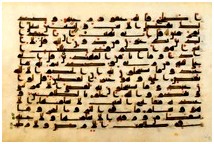
Leaf in the Qu’ran, Middle East,
800-900. Museum no. Circ.161-1951
The way the scripts developed
Although a lot of ‘languages’ of Arabic were spoken in pre-Islamic occasions, and a few are recognized to happen to be written lower, most literature was transmitted orally. The Qu’ran, too, was preserved by dental transmission until following the Prophet’s dying if this was recorded in written form. This needed the Arabic script be standardised. We all know the standard type of script is at use through the finish from the seventh century. It had been employed, for instance, around the first surviving monument of Islamic architecture, the Dome from the Rock in Jerusalem, built-in AD 691. The brand new writing also made an appearance around the coins minted for Muhammad’s successors, the caliphs. Both Dome from the Rock and early Islamic coinage use Qu’ranic quotes to declare Islam because the new monotheistic belief.
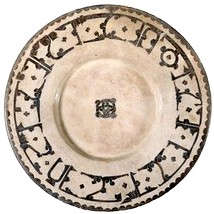
Dish with inscription in floriated Kufic
script, Iran or Uzbekistan, 900-1000.
Museum no. C.66-1967
The very first formal calligraphic style is known as the Kufic style following the town of Kufah in Iraq. It had been utilized in many early Qur’an manuscripts as well as for inscriptions, including individuals in the Dome from the Rock. Confusingly, exactly the same name can also be generally employed for another major number of script styles, which found prominence within the tenth century. These new, more angular styles found include many whimsical variants for example foliated Kufic (decorated with curling leaf shapes) and floriated Kufic (decorated with flower forms). This second number of Kufic styles was utilized in contexts as varied as Qu’ran manuscripts, coinage, architectural inscriptions and also the decoration of ceramics.
Although this second kind of Kufic had been developed in the centre East, most likely in Baghdad, a brand new style was created far towards the west, in Muslim-ruled The country or The other agents. The Arabic reputation for this western region is al-Maghrib, so the new style was known as Maghribi. Some calligraphers in the area still make use of this Maghribi style today. Within the Eastern Islamic world, however, the Kufic styles had pretty much died by the 13th century, substituted with the plethora of more rounded styles being used now.
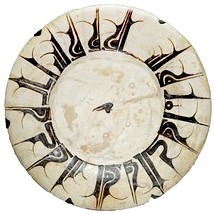
Bowl, Iran or Uzbekistan, 900-1000.
Museum no. C.47-1964
It might be the new, more fluid styles coded in the East because paper had replaced parchment and papyrus because the primary medium for important manuscripts and documents. The top of paper might be sized (coated with starch) and applied having a stone until very smooth and glossy. The pen moved over this surface with great ease. (Parchment ongoing for use until a significantly future date within the Maghrib).
Take into consideration was the kind of pen used, that was produced from a reed. The nib is made by cutting the finish from the reed having a knife. Different effects might be achieved by cutting the nib diversely. The later, rounded scripts were written having a nib cut in an oblique position, which permitted the calligrapher to produce both the years lines, adding elegance and variety towards the script. The width from the pen seemed to be important: wider nibs were required for bigger script so the width from the line remained compared towards the overall size the writing.
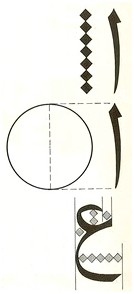
A method of proportion in line with the width from the nib also determined the shapes of the baby letters, and also the relative sizes from the letters inside a type of writing. The letter Alif, for instance, consists basically of merely one vertical stroke. In a single style, it is just three occasions up to it’s wide, during another it’s seven occasions as high. The letter Alif thus remains much more prominent within the second style and plays a role in its overall look. Variations were permitted to consider account from the different contexts instructions might exist in, there seemed to be versatility in the size of the ligatures, or joins between your letters. It was important since the Arabic script is definitely cursive, or became a member of-up, rather than has separate letters, as with printed British.
Another fundamental component within the formation of the style was the character from the bottom line. In lots of scripts, the imaginary line which the letters were written was strictly horizontal. In other people, each new number of letters started over the bottom line after which sloped downwards left to satisfy it. Arabic script, unlike British, reads to left. These ‘hanging’ scripts were initially devised like a security feature in official documents, since the ‘hanging’ groups might be placed very close together to avoid unauthorised additions. Later, though, this selection was utilized in other contexts since it was considered elegant.
Techniques and materials
Designs with calligraphy were produced from a variety of materials. Yet calligraphy frequently imitates the technical results of pen in writing, even if it seems on other media. You’ll be able to see, for instance, the elegant vary from thick to little difference and also the square form of superscript dots written having a square-cut pen nib. Artists frequently made their designs by copying from prepared templates prepared (onto paper) with a calligrapher.
Ink on parchment
Prior to the invention of paper, vellum or parchment was the greatest quality writing material available. It is made of prepared animal hide. A reed pen, using the tip cut in an position and full of ink, could have been used. Writing on vellum could be erased or altered.
Ink in writing
The calligraphy could have been produced utilizing a reed pen and ink directly onto starched and polished paper, which provided a great fine surface for writing.
The calligraphy tile pictured below was deeply created using the inscriptions (and plant designs) and engrossed in coloured glazes, prior to the final firing. This method was utilized in Central Asia just for a short period, from around 1350 towards the early 1600s.
The letters were created after which colored. Within the image underneath the paint has mostly worn out though you may still see some traces remaining.
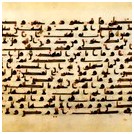
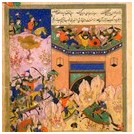
Detail of page in the Zafar Nama epic, Iran, 1500-1600. Museum no. E.2138-1929
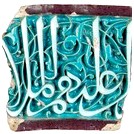
Tile fragment, Bukhara, about 1359. Museum no. 971-1901
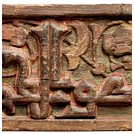
Detail from wooden panel with Arabic inscription, The country or The other agents, 1150-1250. Museum no. 378A-1907
Stained glass
This window pictured below is made of small bits of glass of various colours, that have been arranged in patterns inside a plaster framework.
The weaver from the silk from Muslim The country has precisely reproduced the flowing lines of the written inscription in Arabic, an activity requiring enormous care within the design. The saying ‘Glory to the lord the sultan’ continues to be repeated inside the largest band within the design, allowing the illusion of the lengthy frieze of calligraphy.
Enamelled glass
The lamp is made by blowing hot glass fit after which departing it to awesome. The enamel colours and gilding were then colored on – the enamel would be a solution of colors and ground glass that melted and fused to the lamp if this was reheated inside a kiln. The blown glass could have been decorated with enamel and gilt, possibly using fine brushes.
Metalworkers chiselled out small regions of the brass surface and filled all of them with bits of gold and silver. They added details by chasing the surfaces from the softer inlaid metals having a hammer and tools and adding a black filler to produce contrast. The casket pictured below includes a strip of calligraphy round the sides as well as on the lid.
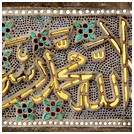
Window using the Shahadah, the Muslim profession of belief, created stucco and colored glass, Egypt, 1800-80. Museum no. 1202-1883
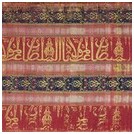
Silk with Arabic inscription, silk and metal-wrapped thread in lampas weave, The country, 1300-1400. Museum no. 830-1894
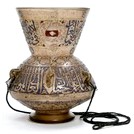
Mosque lamp, gilt and enamelled glass, Egypt or Syria, 1340. Museum no. 1056-1869
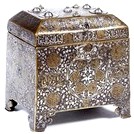
Casket, brass with inlaid silver and gold, Iran, 1300-1350. Museum no. 459-1873
Decorating calligraphy
In addition to being written with great elegance, there have been many ways that calligraphy might be enhanced with the addition of decoration. The language themselves might be designed in gold, or perhaps in colours apart from black. Words and letters may be outlined or could lie against experience pattern. Additionally, calligraphers combined various sizes, colours and designs of text for various phrases or parts of text (but always sticking with the guidelines of proportionality within each section). These Qu’ran folios show how calligraphers might make functional information on formatting and punctuation into superbly designed elements.
Observe that the decorated frames and background patterns don’t hinder the clearness from the script, or draw attention away from in the content from the text. This will be relevant since the Qu’ran is regarded as the term of God.
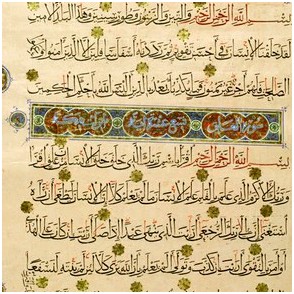
Leaf in the Qu’ran, Egypt, 1400-1500. Museum no. 7217-1869
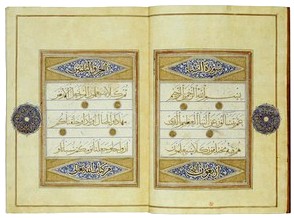
Qu’ran manuscript, Iran, about 1370. Museum no. 365-1885
The Calligraphers
Calligraphers were one of the most highly considered artists in Islamic societies, which continues to be the situation in lots of places today. Their status took it’s origin from the difference of the work, but additionally around the eminence of the teachers. Consequently, a literary tradition developed where the good reputation for calligraphy was created like a chain of transmission between masters and pupils, covering very lengthy periods.
Training might take a long time, using the pupil understanding how to copy exactly models supplied by the teacher. Only if the pupil had mastered the concepts in this manner could she or he – both women and men trained as calligraphers – be a master and start to produce new work. Learning calligraphy was therefore much like apprenticeships in other trades.
Lots of people who studied calligraphy were happy to stop their training once they understood enough to earn their living as copyists. Printing was brought to the Islamic world progressively between your 18th and 20th centuries but nearly all books ongoing to become created by hands for the majority of the Islamic period. Not every copyists were calligraphers, and lots of books were copied in untidy personal styles that didn’t obey some rules. A magazine copied inside a good, obvious hands was therefore confined.
Others studied calligraphy to go in specific professions, such as chancery scribe. These men copied out official documents for that ruler, using distinctive types of script. A few examples could be very impressive, also it was usually the situation the excellence and complexity from the writing reflected the status from the document.
The calligraphers who progressed farthest created probably the most elegant manuscripts. The work they do was costly plus they generally labored on commissions in the wealthiest people of society, especially sultans, shahs along with other rulers. The very best were frequently employed inside a department from the ruler’s palace dedicated to book production and connected tasks. When the text was complete, it was finished by other artists and craftsmen employed there, who created the colored decoration along with a wealthy binding.
The very best calligraphers were also commissioned to produce compositions that may be performed in other media. It was another task from those of copying out a continuing text inside a manuscript. The calligrapher needed to keep in mind the area available and style the lettering to fill that space inside a well-balanced way and based on the rules for design for script. The calligrapher works the design in writing for transfer towards the new medium.
These designs along with other single sheets created by great calligraphers were frequently preserved so they might be copied by later generations. In later occasions, these were collected into albums to become appreciated by connoisseurs. Consequently, calligraphers started to create single sheets particularly for inclusion in albums. Even later, it grew to become the custom to hold calligraphy around the walls of homes, in the way of works of art. Calligraphers had found one other way to earn money, and, along with charges from teaching and commissions for inscriptions, this permitted some outstanding calligraphers to stay independent. This, too, is when calligraphers frequently work today.
This short article was written included in the Teachers’ resource: Exploring calligraphy with the Jameel Gallery of Islamic Art.
V&A Innovative Leadership Programme
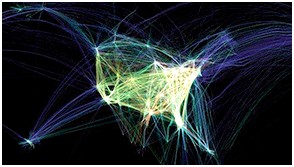
The V&A Innovative Leadership Programme targets managers employed in the humanities & creative industries searching to build up additional skills, insight and chance. Applications are actually open for the following course.
Source: www.vam.ac.uk